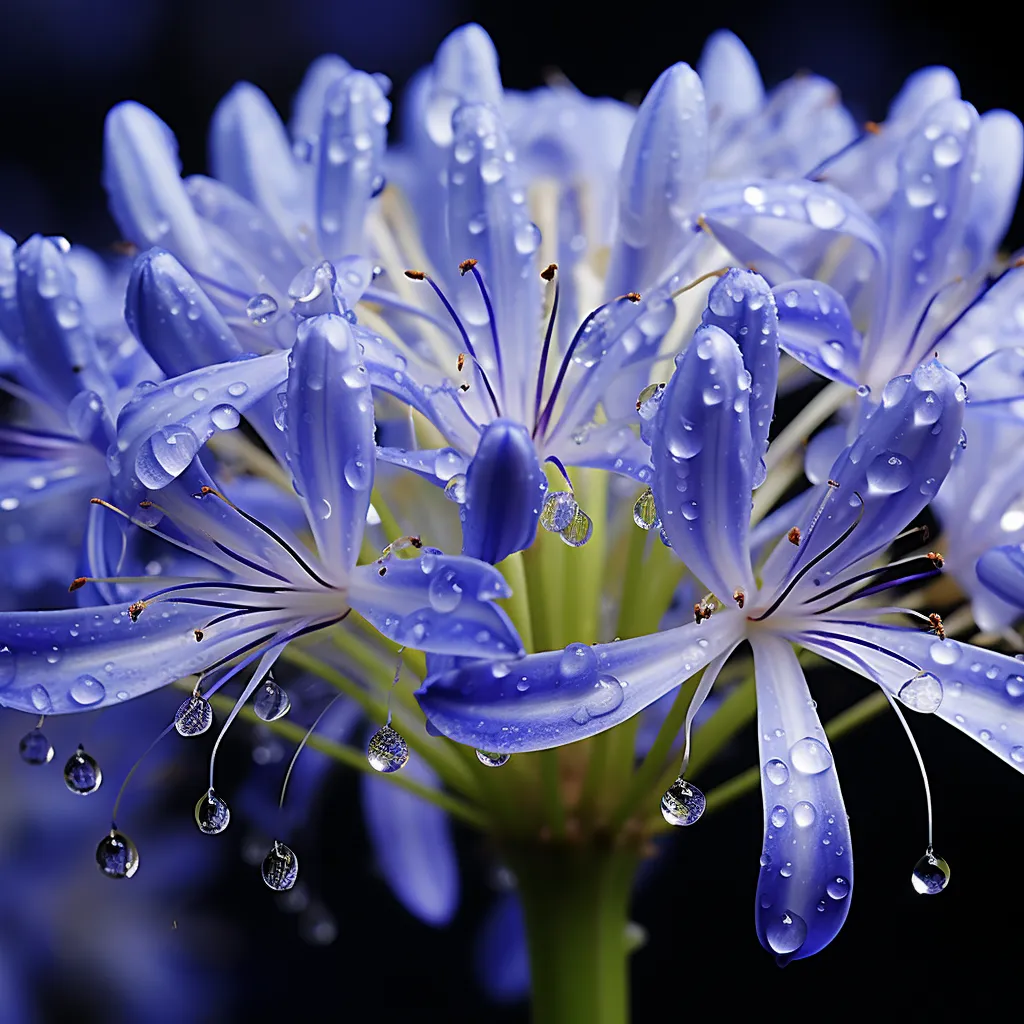Story of Day :
Contents
Agapanthus Flower of Love (African Lily Flower of Love) Plant Care Tips
Gardening is not just a hobby; it’s an expression of love for nature.
And what better way to express this love than by growing beautiful flowers in your garden? One such flower that is sure to steal your heart is the Agapanthus, also known as the African Lily or the Flower of Love.
In this article, we will explore some care tips that will help you grow and nurture these enchanting blooms.
Choose the Right Location
The first step in caring for Agapanthus plants is to select the right location in your garden.
These plants thrive in full sun but can also tolerate partial shade.
Ensure that they receive at least 6 hours of direct sunlight each day for optimal growth and blooming.
- Choose a spot with well-draining soil: Agapanthus prefers soil that is rich, fertile, and well-drained.
Avoid areas with heavy clay or compacted soil.
- Provide adequate space: Give each plant enough space to grow and spread their roots.
This will prevent overcrowding and ensure good air circulation around the plants.

Watering Requirements
Adequate watering is crucial for healthy growth and blooming of Agapanthus flowers.
Here are some watering tips:
- During active growth: Water regularly during spring and summer when the plant is actively growing.
Keep the soil moist but not waterlogged.
- In winter: Reduce watering during dormant periods, as excessive moisture can cause root rot.
- Rainwater vs tap water: If possible, use rainwater instead of tap water, as it is less alkaline and contains fewer chemicals.
Agapanthus thrives in slightly acidic soil.
Fertilization

To promote healthy growth and vibrant blooms, it is essential to fertilize your Agapanthus plants regularly.
Here are some fertilization tips:
- Choose the right fertilizer: Use a balanced, slow-release fertilizer that is specifically formulated for flowering plants.
- Timing: Apply fertilizer in early spring before new growth starts.
Repeat the application every two months during the growing season.
- Avoid over-fertilizing: Excessive use of fertilizer can lead to excessive foliage growth but minimal blooming.
Follow the instructions on the fertilizer packaging for proper dosage.
Pest and Disease Control
Like any other plant, Agapanthus can be susceptible to pests and diseases.
Here are some common issues you may encounter:

- Aphids: These small insects can suck sap from the leaves and stems of your plants.
Use neem oil or insecticidal soap to control aphid infestations.
- Fungal diseases: Agapanthus can be prone to fungal diseases such as leaf spot or root rot.
Ensure good air circulation around your plants, avoid overwatering, and remove any infected leaves or stems promptly.
Division and Propagation
If you want to expand your collection of Agapanthus plants or share them with friends, division and propagation are simple methods you can use:
- Division method:</stron Divide mature clumps of Agapanthus every 3 to 4 years.
Dig up the clump and carefully separate the individual plants using a sharp, sterile knife.
Replant the divisions in well-prepared soil.
- Propagation from seed: Collect seeds from mature seed pods and sow them in well-drained, sandy soil.
Keep the soil consistently moist until germination occurs, which usually takes several weeks.

Summary
Caring for Agapanthus plants is a rewarding experience that will fill your garden with beauty and love.
By choosing the right location, providing adequate watering and fertilization, controlling pests and diseases, and utilizing propagation methods like division or seed sowing, you can ensure healthy growth and abundant blooms of these mesmerizing flowers.
So grab your gardening tools and get ready to fall in love with Agapanthus!